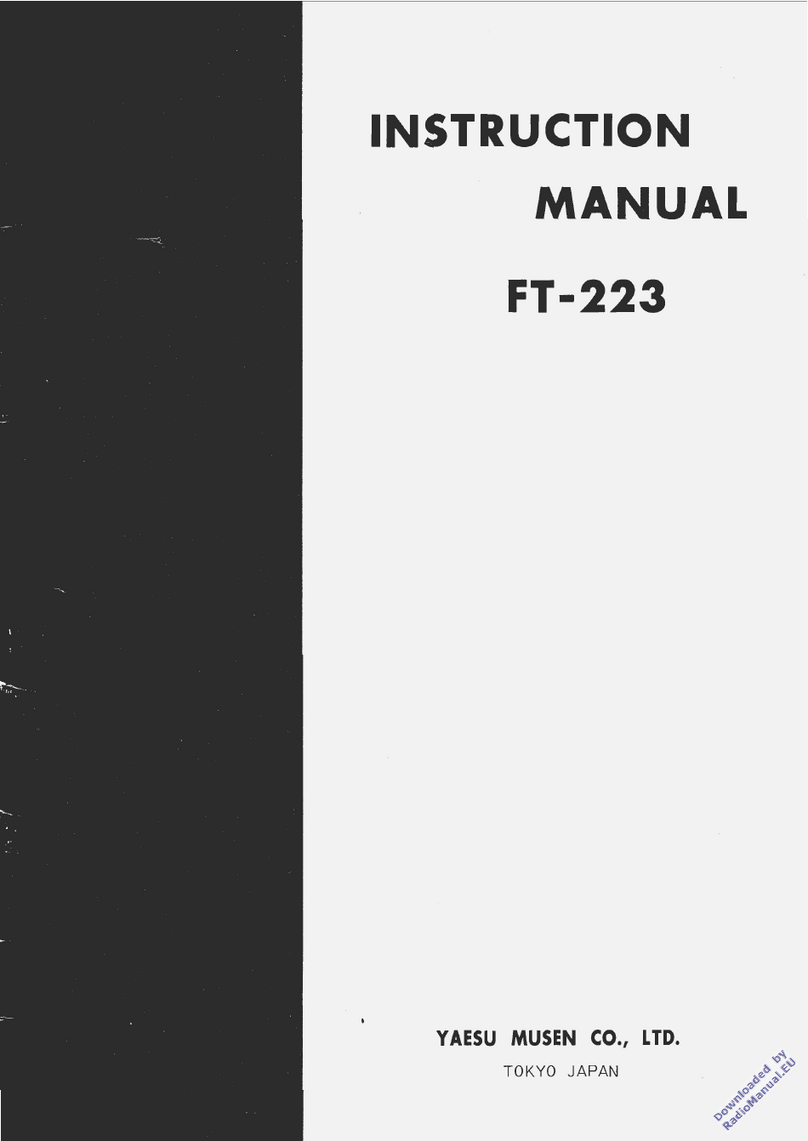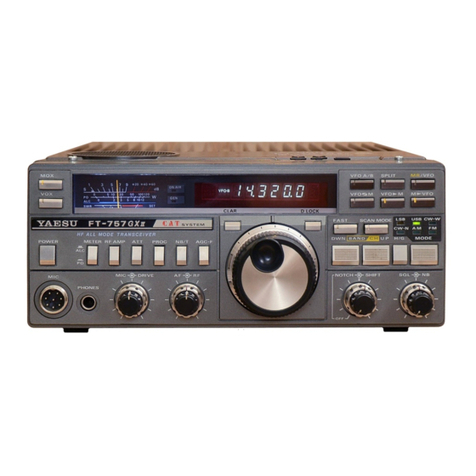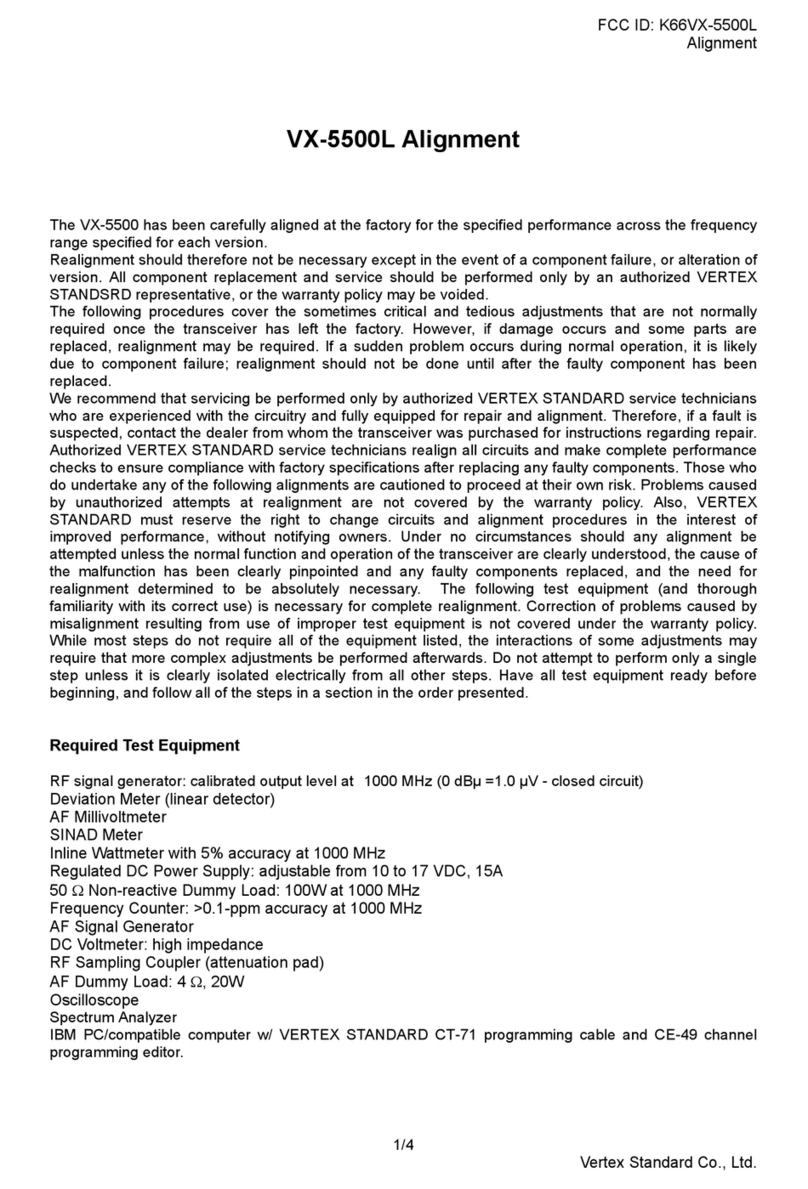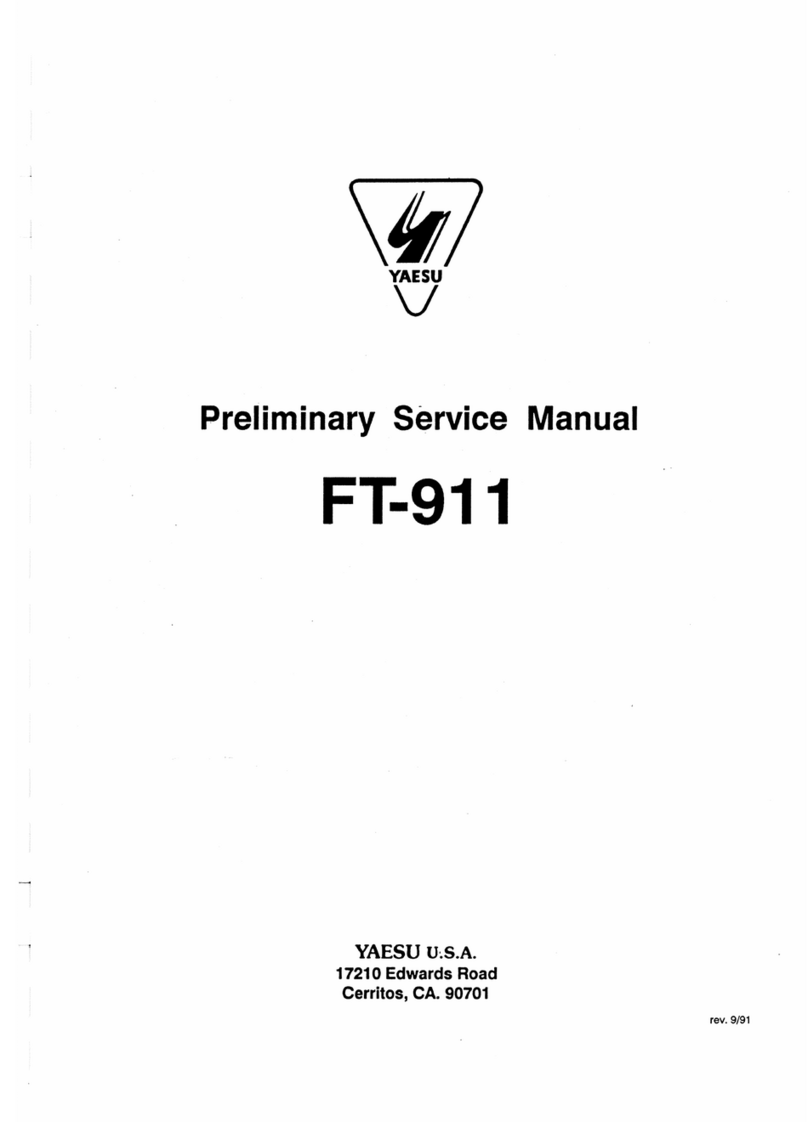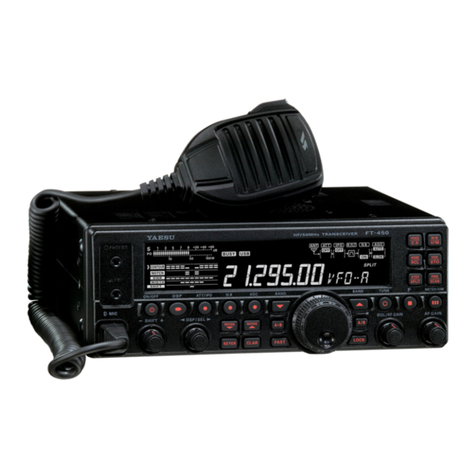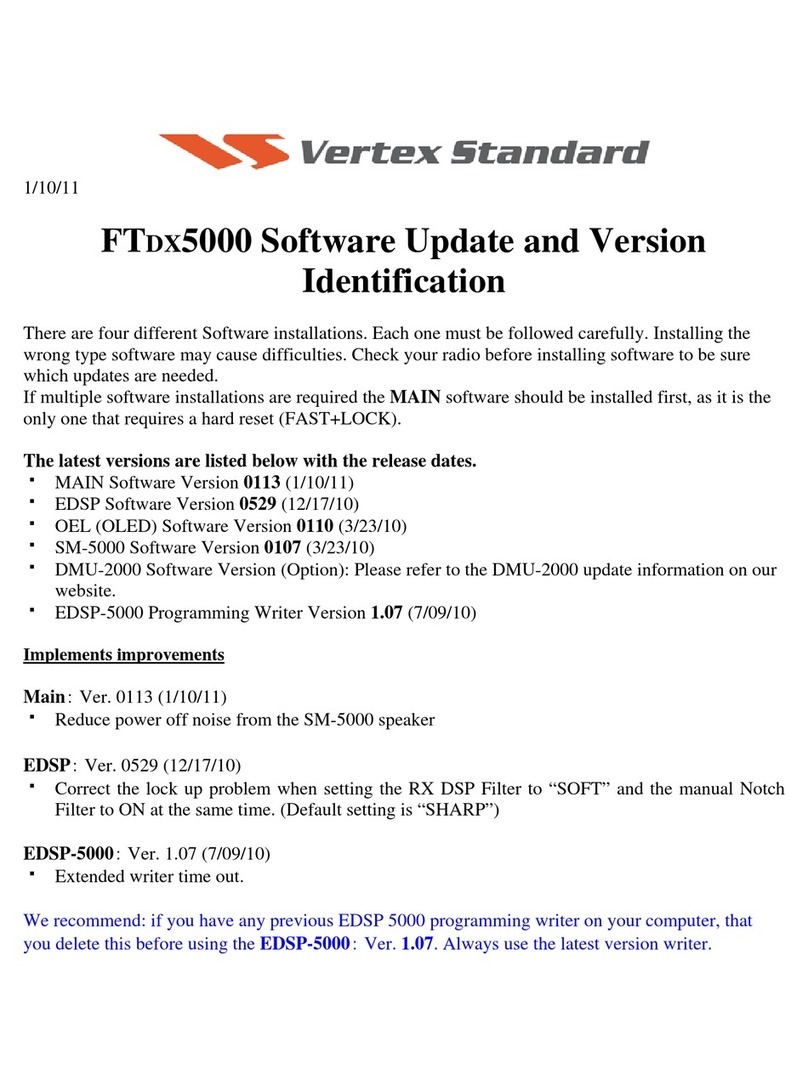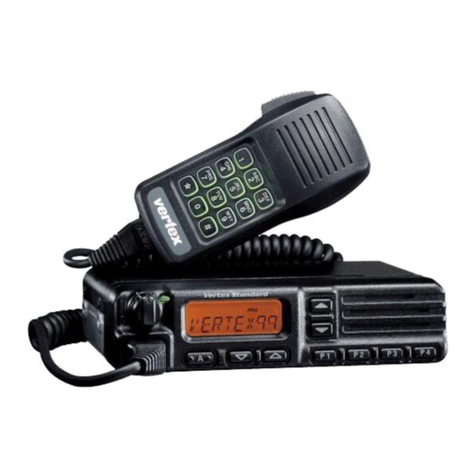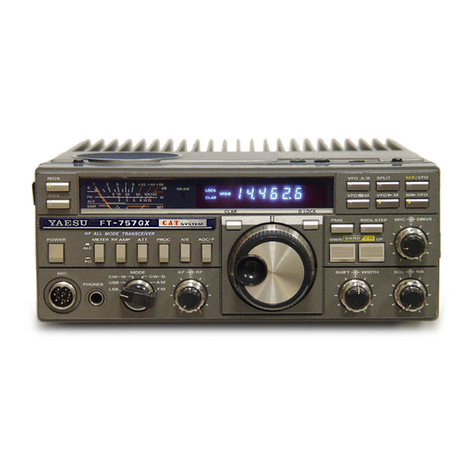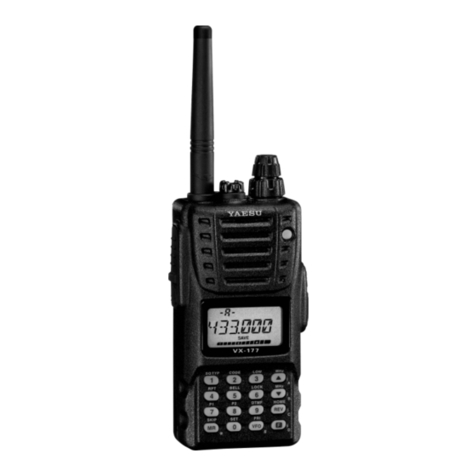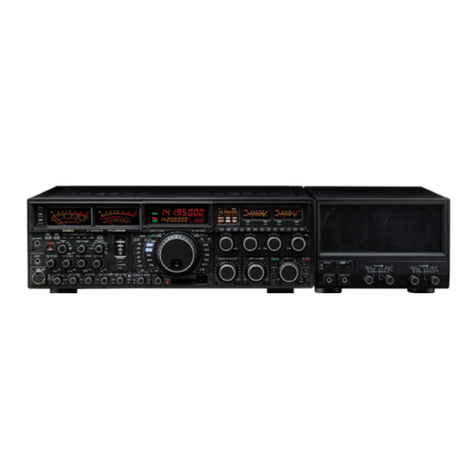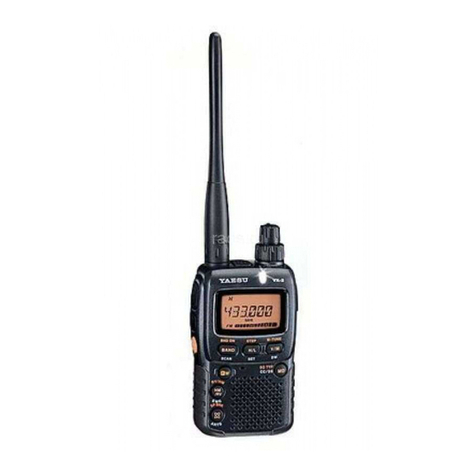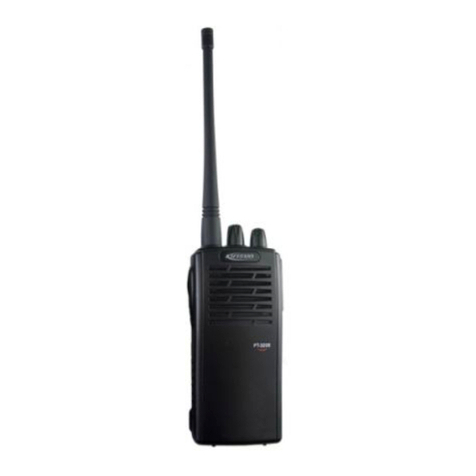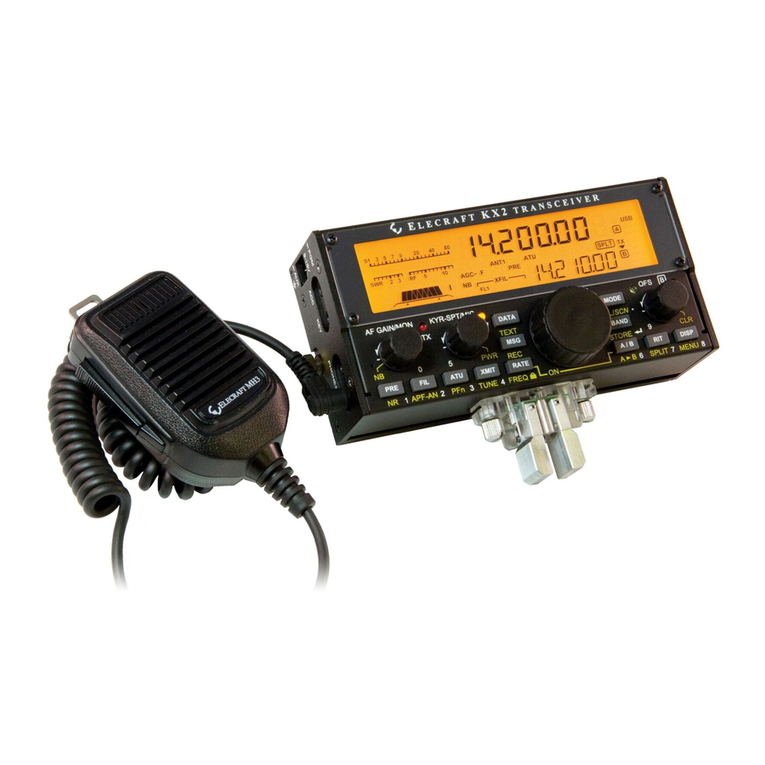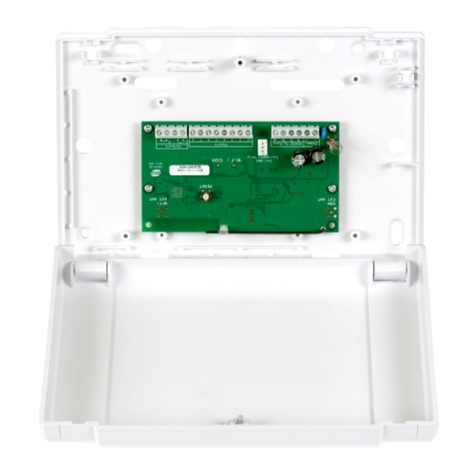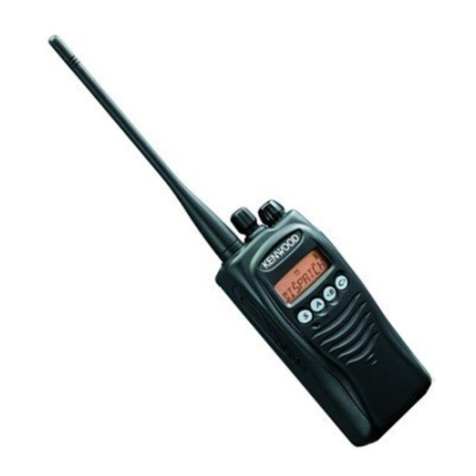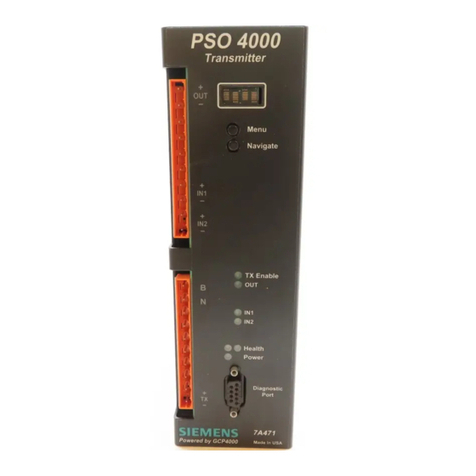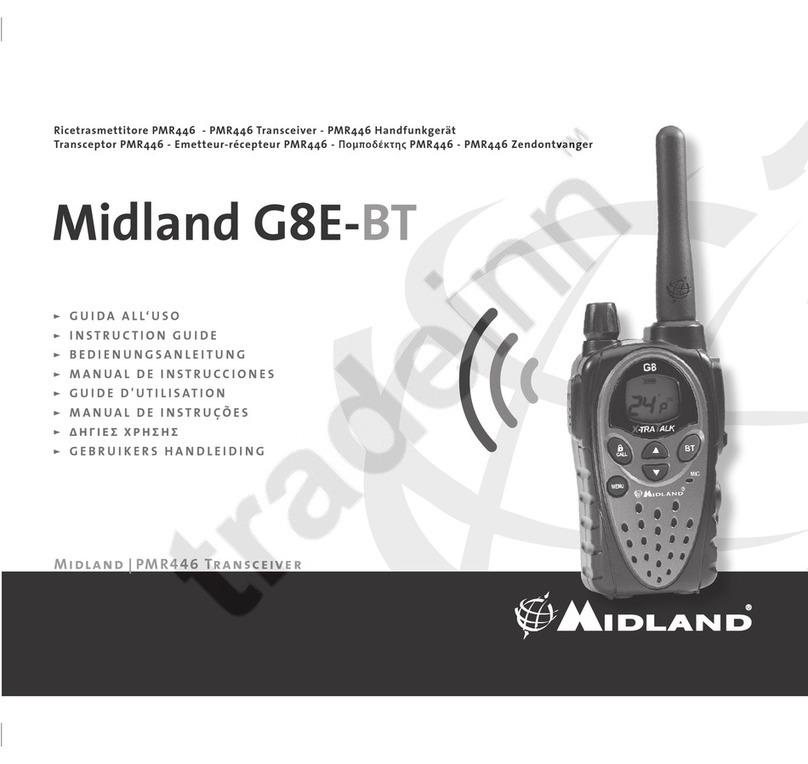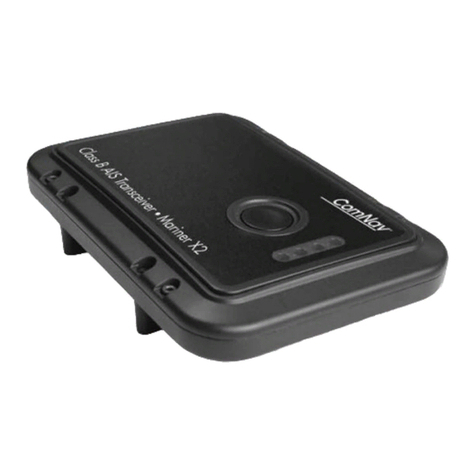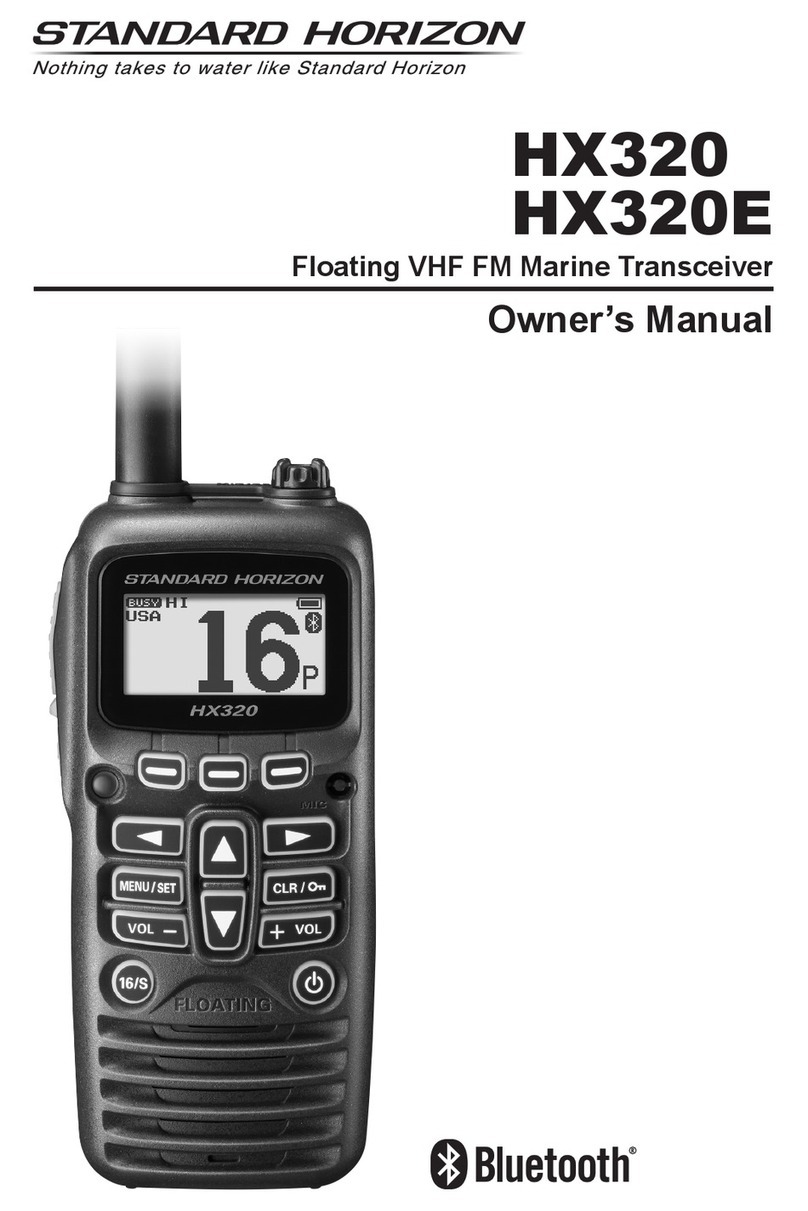Contents
Memory Mode .............................................................. 45
Regular Memory Operation ...................................... 46
Memory Storage ................................................... 46
Storing Independent Transmit Frequencies
(“Odd Split”) ........................................................ 46
Memory Recall ..................................................... 47
HOME Channel Memory ..................................... 47
Labeling Memories ............................................... 48
Memory Offset Tuning......................................... 49
Masking Memories ............................................... 50
Memory Group Operation ................................... 51
Moving Memory Data to the VFO ...................... 52
Memory Only Mode ............................................. 52
Hyper Memory Operation ......................................... 53
One-Touch Memory Operation ................................ 54
Sort-wave Broadcast Station Memory Channels ..... 55
VHF Marine Memory Channels ............................... 56
Scanning ......................................................................... 57
VFO Scanning ........................................................... 58
Memory Scanning...................................................... 58
Temporary Memory Skip ..................................... 59
How to Skip (Omit) a Channel
During Memory Scan Operation.......................... 59
Preferential Memory Scan.................................... 60
Programmable (Band Limit) Memory Scan (PMS) .61
“Priority Channel” Scanning (Dual Watch) ............. 61
Automatic Lamp Illumination on Scan Stop ............ 62
Band Edge Beeper ..................................................... 62
Spectrum Analyzer Operation................................... 63
Smart Search Operation ............................................ 64
Channel Counter Operation ...................................... 66
Internet Connection Feature ...................................... 67
Sensor Mode .................................................................. 68
Sensor Mode Option ................................................. 69
Clock Set .............................................................. 69
Selecting the Wave Form Display ....................... 70
Selecting the Unit of Temperature Display ......... 70
Selecting the Unit of
Atmospheric Pressure Meter (Barometer) ........... 70
Correcting the Atmospheric Pressure Meter
(Barometer Offset) ............................................... 70
Selecting the Unit of Altimeter ............................ 71
Correcting the Altimeter Setting
(Altimeter Offset) ................................................. 71
Timer Operation ........................................................... 72
Display Customization ................................................. 73
Icon Mode .................................................................. 73
Icon Selection ............................................................ 73
Icon Editor ................................................................. 74
Power-Off Display Mode .......................................... 75
S-and TX Power Meter Symbols.............................. 76
Font Editor ................................................................. 77
Display Contrast ........................................................ 78
Display Dimmer......................................................... 78
STROBE Customization ........................................... 79
Reset Procedures .......................................................... 80
Cloning ........................................................................... 81
Set Mode ........................................................................ 82
Installation of the SU-1 ................................................ 97
Specifications................................................................. 98
Appendix ...................................................................... 100
Introduction ..................................................................... 1
Controls & Connections ................................................. 2
Display Icons & Indicators ............................................ 3
KeypadFunction ............................................................ 4
Accessories & Options ................................................... 6
Installation of Accessories ............................................. 7
Antenna Installation ..................................................... 7
How to Install the Quick Draw Belt Clip ................... 8
Installation of FNB-80LI Battery Pack....................... 8
Installation of FBA-23 (option)
Alkaline Battery Case............................................. 9
Battery Life Information ............................................ 10
AC Operation Using NC-72 ..................................... 10
Interface of Packet TNCs ............................................ 11
Operation ....................................................................... 12
Switching Power On and Off .................................... 12
Adjusting the Volume Level ..................................... 12
Squelch Adjustment ................................................... 13
Selecting the Operating Band.................................... 14
Selecting the Frequency Band ................................... 15
Frequency Navigation................................................ 16
Audio Muting............................................................. 17
BAND Link................................................................ 17
Transmission .............................................................. 17
Changing the Transmitter Power Level ............... 18
VOX Operation ......................................................... 19
AM Broadcast Reception .......................................... 20
AM Aircraft Reception.............................................. 20
FM Broadcast/TV Audio Reception ......................... 21
Weather Broadcast Reception .................................. 22
Keyboard Locking ..................................................... 23
Keypad/LCD Illumination ......................................... 24
Disabling the Keypad Beeper ................................... 24
Advanced Operation .................................................... 25
Setting the Frequency Display Image Size ............... 25
Changing the Channel Steps ..................................... 25
Changing the Operating Mode .................................. 26
Repeater Operation.................................................... 27
CTCSS Operation ...................................................... 30
DCS Operation .......................................................... 31
Tone Search Scanning ............................................... 32
CTCSS/DCS Bell Operation ..................................... 33
Split Tone Operation ................................................. 33
Tone Calling (1750 Hz) ............................................ 34
ARTS (Automatic Range Transponder System) ...... 35
DTMF Operation ....................................................... 38
Emergency Channel Operation ................................. 39
ATT (Front End Attenuator) ..................................... 40
Receive Battery Saver Setup ..................................... 40
TX Battery Saver ....................................................... 41
Disabling the “STROBE” ......................................... 41
Automatic Power-Off (APO) Feature ....................... 42
Transmitter Time-Out Timer (TOT) ......................... 42
Busy Channel Lock-Out (BCLO) ............................. 43
MIC Monitor ............................................................. 43
Changing the TX Deviation Level ............................ 44

